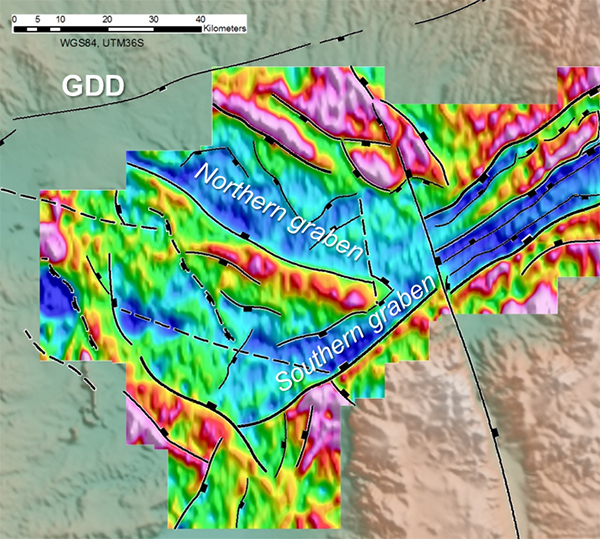Innovations in Gravity Technology and Imaging Capabilities
Paris, France | Sep 27, 2017
Advanced Airborne Gravity Sensors and Data Processing and Inversion Methods Drive Gravity Surveying into New Territory
Discovery of the Nash dome in Brazoria County, Texas by a torsion balance survey in 1924 marked the first use of gravity techniques for oil prospecting in the United States. The value of gravity data in advanced oil exploration workflows is well understood today, and refinement of processing techniques and innovative acquisition technologies continue to drive its application into new areas.
CGG Multi-Physics has a long heritage of development and application of gravity surveying technology, processing techniques and imaging software. During the GM2 and GM3 conference technical sessions they will showcase further advances in sensor design and deployment, advanced processing techniques, and present a greenfield prospecting example from a data-poor rift area in Tanzania.
These advances include further developments in broadband acquisition, a familiar term in seismic, but equally applicable to gravity. For gravity wavelengths shorter than 25 km, the precision of CGG’s Falcon® Airborne Gravity Gradiometer (AGG) sets the benchmark for airborne gravity measurements. However, as with all AGG acquisition systems, accuracy diminishes as wavelength increases, making it difficult to reconcile gravity derived by AGG systems with conventional ground or marine gravity data. To overcome this, CGG has developed a new gravity meter, sGrav, which provides the missing link between conventional gravity and AGG data and is being presented on their booth. This strap-down gravity system is a small, lightweight instrument that sits alongside the Falcon AGG system, providing highly accurate gravity data at wavelengths greater than 18 km. This data is acquired simultaneously with AGG data, under the same dynamic drape flight conditions, resulting in Full Spectrum Gravity data.
When processing gravity data, the fundamentals are critical. The majority of the gravity signal detected during airborne acquisition work is caused by the air-ground interface which must be accurately removed to image subsurface geological features. CGG has developed an adaptive triangulation method (presented in GM2) to represent both topographic and bathymetric relief when computing the effects of terrain on the gravity and gravity gradient signal. The main benefits are a reduction in computational time due to the adaptive nature of the relief triangulation, and the joining of onshore terrain with offshore bathymetry without spurious effects from coastlines when airborne surveys cross both land and water.
Accurate density modeling is essential in reservoir modeling, and seismic reflection data does not directly measure density changes. For more accurate and realistic density estimates, CGG Multi-Physics Imaging uses acoustic impedance and seismic velocity to derive a starting density model for gravity data inversion. This initial model is verified and adjusted based on either gravity or gravity gradiometry data, ensuring a fit with real geology (presented in GM3).
Multi-physics methods excel at rapidly providing exploration data sets over frontier basins. The Tanzania Petroleum Development Corporation (TPDC) commissioned extensive AGG and airborne magnetic surveys of remote, data-poor rift basins. Situated in the far north of the country, the Eyasi-Wembere rift follows the eastern arm of the East African Rift and terminates in the Tanzanian craton. Integration of gravity and magnetic data into a 3D model identified regional basement compositional changes, the location of at least three volcanic vents as well as sediment thickness, basement depo-centers and sedimentary structural features. The rift grabens are very narrow, but exhibit sediment thicknesses in excess of 4 km and are prospective for oil and gas generation in the right thermal conditions. Shallower basins, with closer proximity to volcanic centers, were also identified and assessed to be prospective (presented in GM2).
Since the 1920s, gravity surveying has continued to play an important role in resource exploration alongside seismic surveying, thanks to advances in acquisition and processing technology. Visit CGG on booth #1425 to learn more about Full Spectrum Falcon and its unique Multi-Physics Imaging capabilities.
